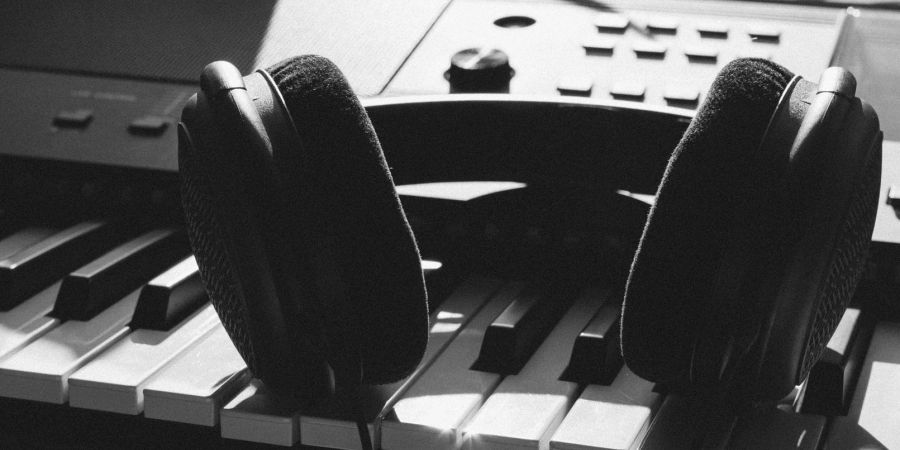

The group of nearby depressible levers or keys of a musical instrument is known as a keyboard. The twelve notes of the Western musical scale are played on keyboards using a combination of bigger, longer keys and smaller, shorter keys that repeat every octave. By mechanically striking a string or tine (acoustic and electric piano, clavichord), plucking a string (harpsichord), forcing air through a pipe organ, striking a bell (carillon), or, on electric and electronic keyboards, completing a circuit, an instrument produces sound when a key is pressed on the keyboard (Hammond organ, digital piano, synthesizer). The piano is the most popular keyboard instrument, hence the keyboard layout is frequently referred to as the piano keyboard.
The lowest note of the Western musical scale's twelve notes is placed on the left;The lengthier keys—those for the seven "natural" notes of the C major scale—jut forward. These notes are C, D, E, F, G, A, and B. These keys are sometimes referred to as the white notes or white keys since they were once coated with ivory. The keys for the other five notes—namely, C/D/E, D/E, F/G, G/A, and A/B (see Sharp and Flat)—are elevated and shorter. These notes are not a part of the C major scale. A pentatonic scale is formed using black keys. These keys are frequently constructed of wood that is black in colour and is known as black notes or black keys because they see less wear. Every octave, the pattern repeats itself.
It was not until the 15th century that lengthier keys for C major were arranged with interstitial, shorter keys for the intermediate semitones. Many keyboard instruments from before the nineteenth century feature a keyboard with the colours of the keys reversed: the white notes are made of ebony while the black notes are coated with softer white bone. Examples of these instruments include harpsichords and pipe organs. A few electric and electronic instruments from the 1960s and later decades have also done this, including Roland's digital harpsichords, Vox's electronic organs from the 1960s, Farfisa's FAST portable organs, and Hohner's Clavinet L, and a particular version of Korg's Poly-800 synthesiser.
In certain electronic organs from the 1960s, the lower part (or parts) of a single keyboard split into two halves, each controlling a separate registration or sound, were indicated using reverse colours, grey sharps, or grey naturals. Such keyboards, which were common in Spanish and certain English organs of the Renaissance and Baroque eras, allow for melody and contrasting accompaniment without incurring the cost of a second manual. Outside of Iberia, the pause was between middle C and C-sharp, or between B and C. In 1842, the harmonium brought back broken keyboards, this time at E4/F4.
On Hammond organs like the B3, C3, and A100, the reverse-coloured keys are latch-style radio buttons for choosing preset tones.
Keyboard instruments' chromatic range, often known as the compass, has a tendency to expand. In the 18th century, harpsichords frequently had over 60 keys and stretched over five octaves, although most pianos made after around 1870 have 88 keys. An 88-key piano's lowest note, which has a frequency of 27.5 Hz, corresponds to a subcontrabass in the range's name. Even more, notes are available on certain contemporary pianos (a Stuart & Sons model has 108 keys, and a Bösendorfer 290 "Imperial" has 108 keys[2]). Small MIDI controllers with 25 keys are available, in contrast to the typical 61, 76, or 88 keys found on current synthesiser keyboards. (Digital systems allow for dynamic octave, pitch, and range "splitting," which can often eliminate the requirement for specific keys. F the "Cameron Carpenter" travelling organ from across the world.
White note keys at the front of the keyboard have consistent width and spacing, while black note keys have uniform width in a standard keyboard layout. The natural notes C, D, and E are somewhat wider than the keys F, G, A, and B in the bigger spaces between the black notes. This permits retaining the regularity of seven "natural" keys per octave while allowing an almost uniform spacing of 12 keys per octave.
The octave span distance on ancient keyboard instruments (organs, virginals, clavichords, harpsichords, and pianos) has fluctuated over the past three hundred years, varying from as low as 125 mm (4.9 in) to as much as 170 mm (6.7 in). Modern piano keyboards typically have an octave spread of 164–165 mm (6.5–6.5 in). Taking into account the space between the keys, this results in an average black key width of 13.7 mm (0.54 in) and a white key width of roughly 23.5 mm (0.93 in). There have been several reduced-size standards suggested.
Christopher Donison, a Canadian, created a 7/8-size keyboard with a 140 mm (5.5 in) octave spread in the 1970s. Steinbuhler & Company in Pennsylvania later manufactured and sold this size, as well as the 15/16 size (152 mm (6.0 in) octave spread) and a lesser version (130 mm (5.1 in) octave span). The registered sizes for these three items are DS6.0, DS5.5, and DS5.1. In 2018, the business became the non-profit DS Standard Foundation. Thanks to a partnership with the DS Standard Foundation, Hailun USA is able to produce pianos in the two different DS6.0 and DS5.5 sizes.
The "one size fits all" approach to piano keyboard production by major firms has been criticised since 2013 by a global network of pianists, instructors, and performing arts health experts. The name of this network is PASK (Pianists for Alternatively Sized Keyboards). Hannah Reimann, a pianist from the United States, has advocated for piano keyboards with shorter octave spans and holds a patent for a system and method for adapting existing pianos to accommodate interchangeable keyboards of various sizes. In new grand pianos or as an upgrade for older pianos, Steinway & Sons USA offers narrower keyboards.




